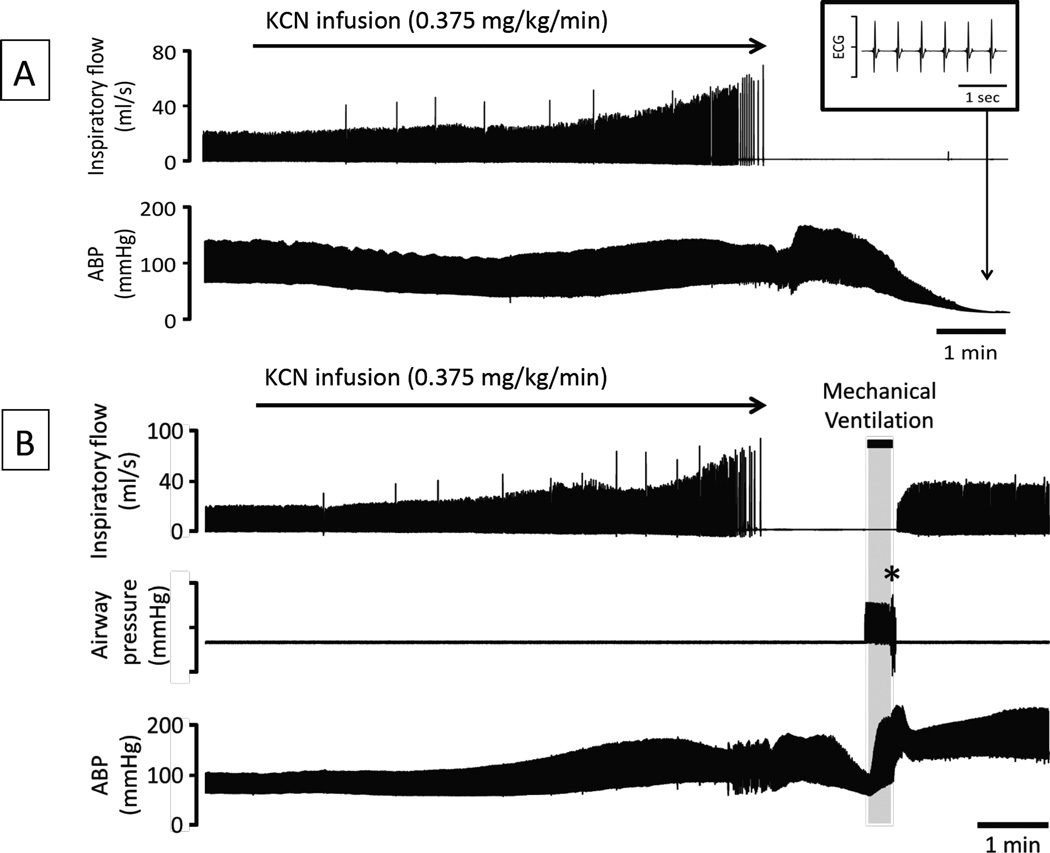Figure 4.
Effects of continuous infusion of KCN (0.375 mg/kg/min) on breathing (inspiratory flow) and arterial blood pressure (ABP) in one rat (panel A). Breathing was stimulated by the infusion of KCN before stopping after 8 minutes. ABP was sustained during the phase of infusion and the initial 2 minutes of apnea before dropping leading to cardiac arrest despite the cessation of the KCN infusion. The inset on the top-right corner shows the electrocardiogram (ECG) signal during the period of asystole, reflecting the presence of a pulseless electrical activity (PEA). Note that no gasping was produced during the phase of apnea in this rat. Panel B shows effects of CN as in panel A, but mechanical ventilation was initiated 90 seconds into the period of apnea, while blood pressure had already dropped by half. Note the restoration of hemodynamics followed by the recovery of a spontaneous eupneic breathing activity resulting from the mechanical ventilatory support that was maintained for 30 seconds only (gray area).

